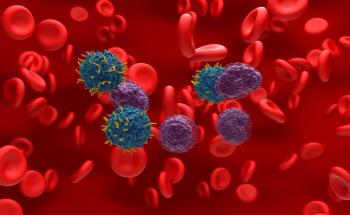
Report Provides Snapshot of Cancer Clinic Performance in Washington State on Quality and Cost
After 5 years of research, the Hutchinson Institute for Cancer Outcomes Research has released a report that is the first in the nation to publicly report clinic-level quality measures linked to cost in oncology.
The Hutchinson Institute for Cancer Outcomes Research (HICOR), the research group at the Fred Hutchinson Cancer Research Center, has capped 5 years of research in Washington state with a report that is the first in the nation to publicly report clinic-level quality measures linked to cost in oncology.
The
HICOR is using the data in the report to identify practices that deliver the highest-quality care and the lowest-cost care so others in the state can learn.
“Although many oncology quality measures are tracked at the national level by organizations such as Medicare and the National Cancer Institute, they are not released to the public at this level of detail, and they are not linked to cost,” HICOR Director Scott Ramsey, MD, PhD,
Ramsey’s co-director, Gary Lyman, MD, MPH, added that the report is just a starting point and should be used to help cancer providers identify “opportunities to collaborate, share best practices, and improve care.”
The report looked at 4 clinical areas:
1. Adherence to treatment recommendations for breast, colorectal, and lung cancer.
In addition to looking at recommended therapies based on those issued by professional organizations, the report analyzed use of antinausea medication during chemotherapy.
The report found that, on average, 85.6% of patients (out of 2865) received recommended therapy based on cancer type, with just a 3.9 percentage-point difference between the highest and lowest clinic rate. Close to all (on average, 97.7%) of the 3639 patients included in the antinausea metric received appropriate antinausea medication during chemotherapy.
The regional average for cost of care was $71,647, with a cost range of $21,643 ($62,292 to $83,935).
2. ED visits and inpatient hospitalizations during chemotherapy.
Of the 7373 patients included in this measure, an average of 29.1% had an ED visit during chemotherapy. Furthermore, the report found that there are meaningful differences in how clinics were managing patients—there was a 13 percentage-point difference between the highest and lowest clinic rate. There was also an average of 37.4% of patients who had an inpatient stay during chemotherapy.
The summary of quality scores found a difference of 22.6 percentage points. During the period of interest, the regional average cost of care was $51,561, with a cost range of $19,090. According to the report, the strong negative relationship between episode cost and quality score suggests “that efforts to improve quality may also lower costs during this period of cancer care.”
3. Follow-up testing after treatment completion for breast, colon, and lung cancer.
This measure included 1836 patients and the report found that, on average, 12.2% of patients with breast, colon, and lung cancer received advanced imaging in the 13 months after treatment. In addition, there was little difference in use of advanced imaging after treatment among the clinics—there was just a 1.7 percentage-point difference between the highest and lowest clinic rate.
There was also a 1.7 percentage-point difference between the highest- and lowest-performing clinics when it came to quality score. During this period of care, the regional average cost of care was $17,661 and the cost range was just $3359.
4. Appropriate provision of end-of-life care.
This measure included 8165 patients and, on average, 5.8% of them received chemotherapy in the last 14 days of life and 12.6% of patients had more than 1 ED visit in the last 30 days of life. In addition, 20.2% of patients, on average, had an intensive care unit in the last 30 days of life, with considerable differences between the highest- and lowest-performing clinics. Finally, on average, 62.5% of patients were enrolled in hospice care 3 or more days prior to death and the 37.2 percentage-point difference suggested considerable differences among clinics.
Quality scores show a 61.8 percentage-point difference between the highest- and lowest-performing clinics. As for cost, the regional average during this period of care was $14,494 with a cost range of just $4832.
Both Lyman and Ramsey wrote in the report that publicly sharing this data creates powerful incentives for improvement with the ultimate goal of achieving the triple aim of better health, better care, and lower costs.
“Our overarching goals for this effort are straightforward,” Ramsey said. “We want to ensure that cancer patients in our state receive the highest quality care and that the data provided in this report support all parties in working together toward that common goal. The Community Cancer Care Report is an example of a collaborative effort to reach across differences for the betterment of patients.”
Newsletter
Stay ahead of policy, cost, and value—subscribe to AJMC for expert insights at the intersection of clinical care and health economics.














































